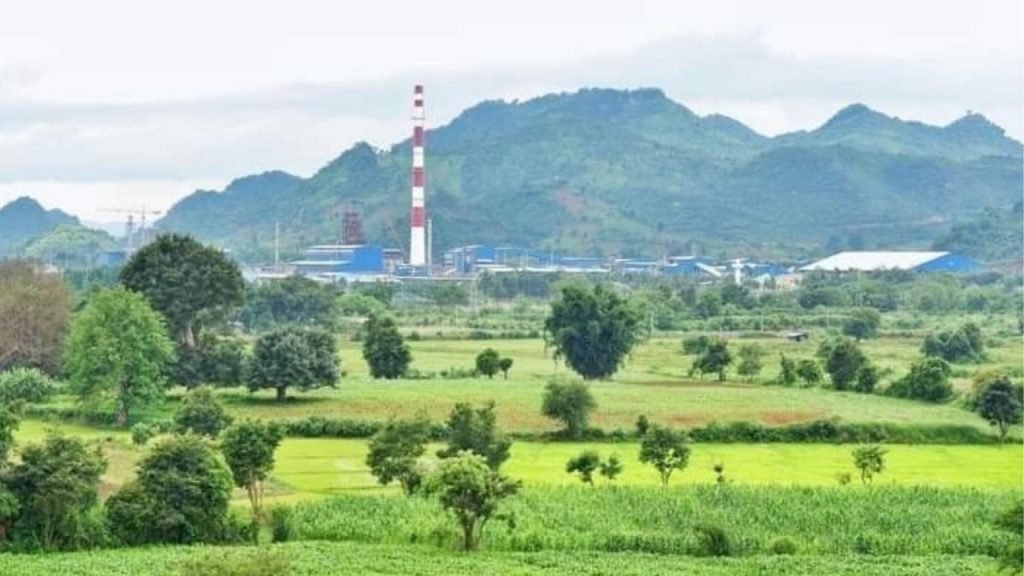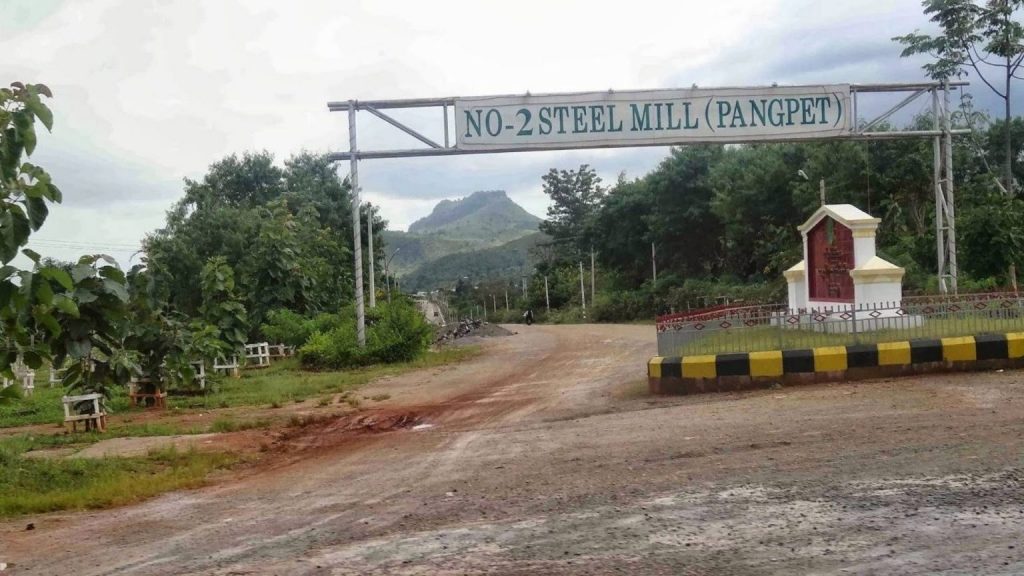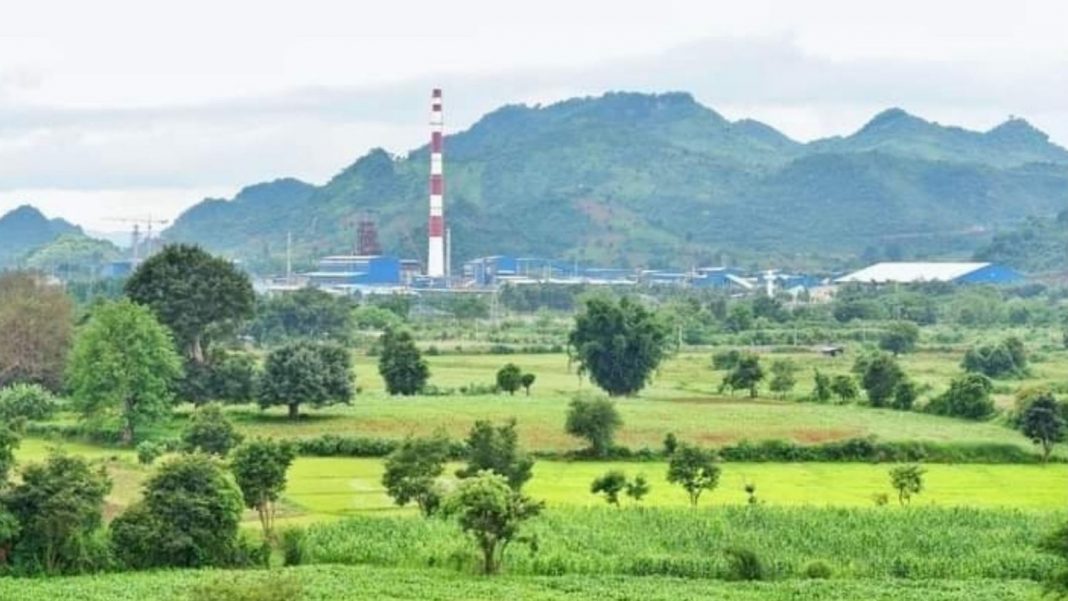“If the Pang Peg (Pinpet) steel mill resumes, the locals could face starvation. We are worried that more land confiscation would occur again,” Khun Thaung, a local resident expressed his concerns.

Pang Peg iron exploitation and processing project is located in Nam Si sub-track, Taunggyi, Southern Shan State, and it is the second largest steel mill in Myanmar. Apart from this project, KBZ cement factory and Ngwe Kabar Kyaw antimony refinery factory are also located in the area.
Pa-O ethnic is the majority lives in the region with some Shan ethnic. Agriculture is the main occupation for their livelihoods. Because of those commercial factories, other than farm land requisitions, health care, education, and employment are also the pressing issues.
The No. 2 Pang Peg iron exploitation and processing project is the second largest in Myanmar, and it was suspended during NLD government in 2017. However, the current military Coup d’état government is eagerly striving to resume the project.
Five months after the coup, in June 2021, the Ministry of Industry and Russian ambassadors met and discussed in Naypyitaw for the continuation of the Taunggyi’s Pang Peg steel mill according to the state-owned newspaper. After the meeting, it was reported that the steel mill was set to start again in 2023.
This will become an iron exploitation and processing co-operation project between the two state-owned enterprises, Myanmar military owned Myanmar Economic Cooperation and Russia state-owned company Gazprom.
Land confiscation for the projects
According to the local sources, farm land were taken over around the Pang Peg (Pinpet) region when the steel mill project started. The residents were anxious that the same incident will occur if the project is to restart again.

“When they started the factory in 2005, many farm plots were confiscated. If the mill is to reopen, I am afraid that land seizing will happen again,” a Naung Kaw local farmer, Khun Thaung, told SHAN.
5,155 acres of land were expropriated in 2005, and additional 100 acres of land were taken away in 2010. For the land taken in 2005, farmers were compensated 5000 Kyat (5 USD) per acre, and for another 100 acres, 500,000 Kyat (500 USD) per acre was paid as reimbursement.
Farmers were not given time to harvest their crops when they seized the land; instead, tractors were used to clear the crops.
“Farmers requested extra time to collect their crops, but they did not listen. They used tractors to vacant the land. Not just farms, they also took the cemetery land. Almost half of the village was taken. One household got 100,000 Kyat (100 USD) as compensation,” a 45 years old Naung Kaw resident, Nan Khin Htay, narrated the story happened in 2005.
The waste from the factory is planned to dump into a stream located east of the mill which farmers and nearby villages use for farming and drinking water.
The local concerns
If the project is to resume, it will have a negative impact on the environment such as water sources in which the locals are replying on.
“If they run the factory again, the sewage will be dump into the stream which the villagers are relying on for farming. Also, as the factory is extracting lots of water, farmers are afraid that they will not have enough water,” Khun Kyaw Oo, who lives in the Pang Peg area, conveyed his alarming voice if the mill is to operate again.
Even though the No. 2 Pang Peg steel mill has been suspended in 2017, the impacts on the environmental habitats still exist today. Deforestation, infertile land, contaminated streams, land confiscations such as farms and cemetery, and wild lives extinction are the today’s consequences.
Moreover, air pollution caused by the project could have a severe health effect especially for the elders and young children.
“They will discard the toxic waste into the streams if the project is going to run again. Creatures living in the water such as fishes will die. It will pollute our drinking water sources. These are our worries,” Khun Kyaw Oo elaborated more of his anxieties.
Farmers who have lost their land can no longer do farming, and some has migrated into neighboring countries for a better job opportunity.
According to Nan Khin Htay, “Those who live around Pang Peg can no longer do agriculture. Some children have to drop out of schools and work in order to feed their family. Some goes abroad to find a better paid job.”
Railroad construction for the project continuation
As part of the Pang Peg steel mill reopening plan in 2023, Myanmar junta is preparing to build a railroad to accommodate the transportation of raw materials for the project continuation.

Last October, 2021, the authorities have made field survey in some villages and farms located south of Taunggyi for the railroad establishment according to local sources.
One Pa-O ethnic activist provided his view saying the railroad could also be used to transport the steel from the No.2 Pang Peg to No.1 Myin Chan steel factory.
“I heard about the railroad plan, but it is not officially confirmed yet. They came to do surveys around the villages here. It will be cheaper to transfer via train route. Gen. Min Aung Hlaing has not made his visit yet though. It is closed to the current Taunggyi bypass road,” the Pa-O young activist told SHAN.
It was instructed by Gen. Min Aung Hlaing that the steel factory be resumed as planned so that the steel production meets the local demand which will reduce the need for foreign currency to import steel. Also, the planned implementation of the electric train will facilitate the transportation of steel and iron ore.
Apart from the steel mill project, KBZ cement factory was started in 2006, acquiring 728.31 acres of land with 100,000 Kyat (100USD) compensation per acre. The factory has been operating up to date.
Additionally, Ngwe Kabar Kyaw antimony refinery factory was built in 2012 on the land of 50 acres in which the company purchased it from the locals. Because of the extreme air pollution, the natives demonstrated their strong objection to the factory. It is reported that it has been over a year since the operation was terminated.
According to the Pa-O Youth Organization (PYO) report called “The Future Robbery” which was released in 2009, the three projects have resulted immense damaging environmental effects, and around 7000 people from 25 villages permanently lost their farms and homes. Additionally, it affected the water sources of 35,000 people who live on the east side of Pang Peg mountain.

Therefore, people are distressed at the news that the Military government is attempting to revive the operation of Pang Peg iron exploitation and processing project.
“We are praying that the project will discontinue. If it does, it will not bring any good to our community and people, and our future will be doomed,” Khun Thaung communicated his dreadful feeling if the Taunggyi Pang Peg steel mill is to resume.
(Shan pronuounce Pang Peg , Burmese call Pin Pet and write Pang Pet )




